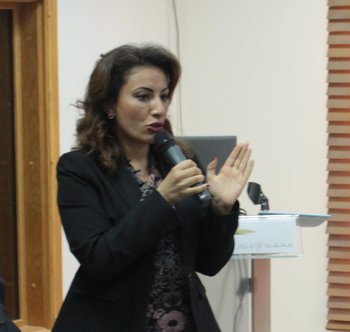Dr. Omneya Nour Eddin

Dissertation: "Rethinking the Dimensions of Comparing Media Systems in Authoritarian Regimes: An Analysis of Post Arab Spring Media Systems in Egypt and Tunisia"
Omneya Nour Eddin Khalifa graduated from Cairo University with a Bachelor in Broadcasting Studies. She holds a double Masters, MA in Communication Studies from Cairo University (2004) and MSc. in Development Studies from the School of Oriental and African Studies, University of London (2014). She was awarded an Erasmus Mundus Research grant in 2012 at City University London. She has worked extensively in the development field as a senior communication expert in Egypt and Jordan for several donors, including EU, GIZ, and World Bank. She has also been teaching communication studies at Ain Shams University until 2016. Khalifa currently works for the Ministry of Advanced Education, Manitoba Provincial Government, in Canada as a Program Advisor. Her research focuses on International Political Communication and Comparative Media Systems. Her dissertation provides a comparative case study of the Egyptian and Tunisian Media Systems.
ABSTRACT
The study belongs to the field of Comparative Media systems. It examines how the analytical dimensions of Comparing Media Systems can be refined to fit better the purpose of describing media systems in the Arab World. The study explores the nature of the authoritarian state and how it determines the state intervenes within the media system. The results confirm that the two countries are dissimilar and cannot fit into the same model. The Role of the State has the most influential role in analyzing the media system in the Arab region. The study recommends amendments to the analytical dimensions of Comparing Media Systems: The Role of the State dimension should be expanded to include tools used by the state to control the media and how these tools are applied in this setting. Political Parallelism dimension needs to be expanded beyond the traditional political actors to include the patterns of loyalist private media ownerships, where the strong state merges with the business and commercial media. Finally, the Media Market dimension needs to be expanded, proposed sub-dimensions: the overall market, the inclusiveness of the media market, and Internet-based media. The study finally proposes that the Statist-Commercialized media model would better describe media systems in the Arab region.
